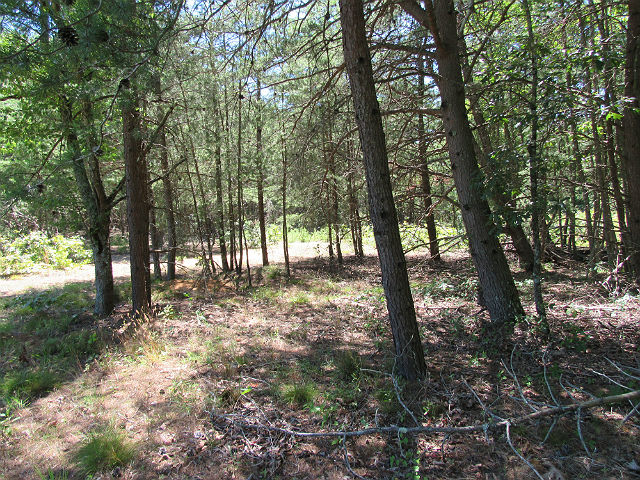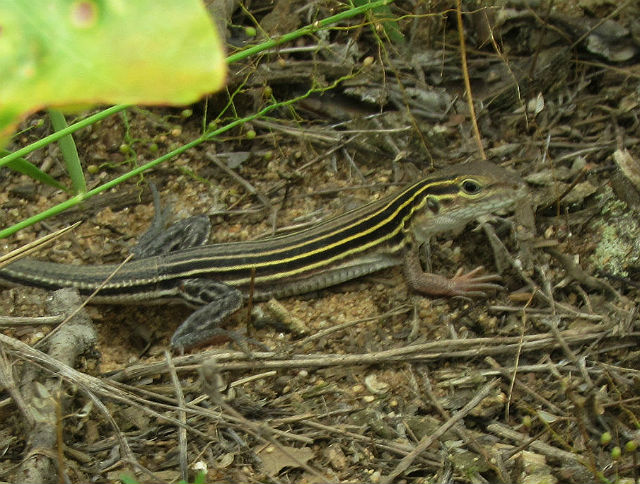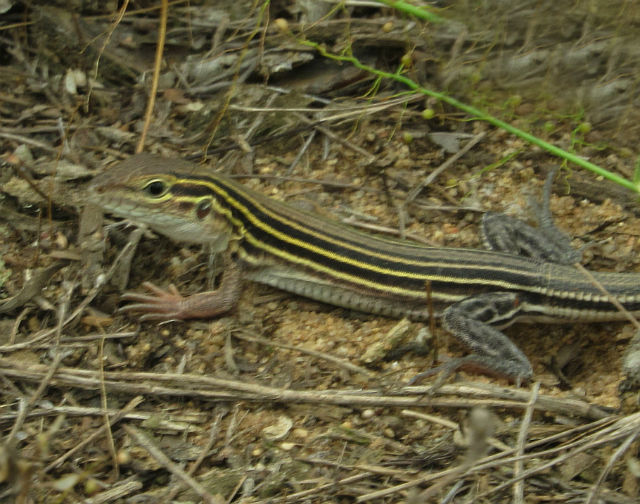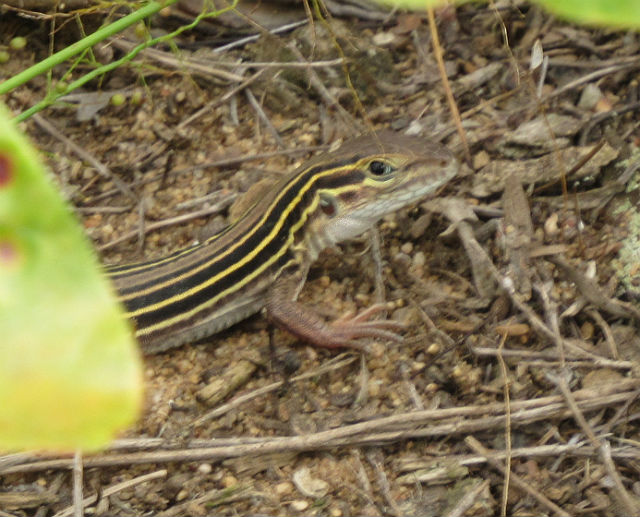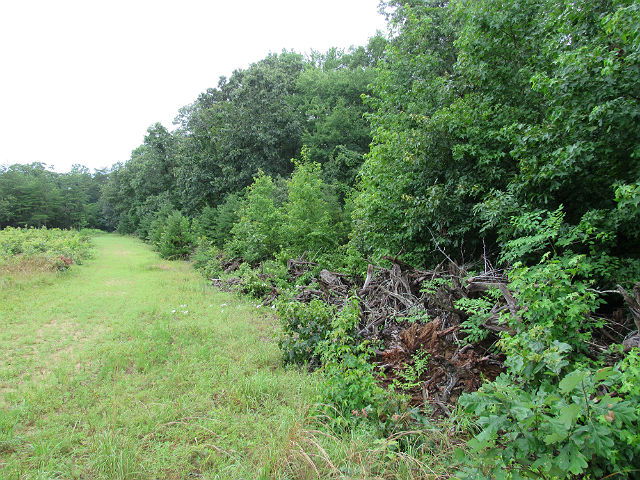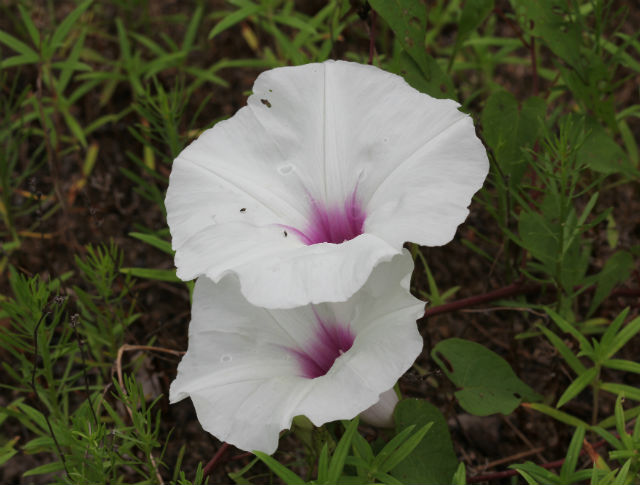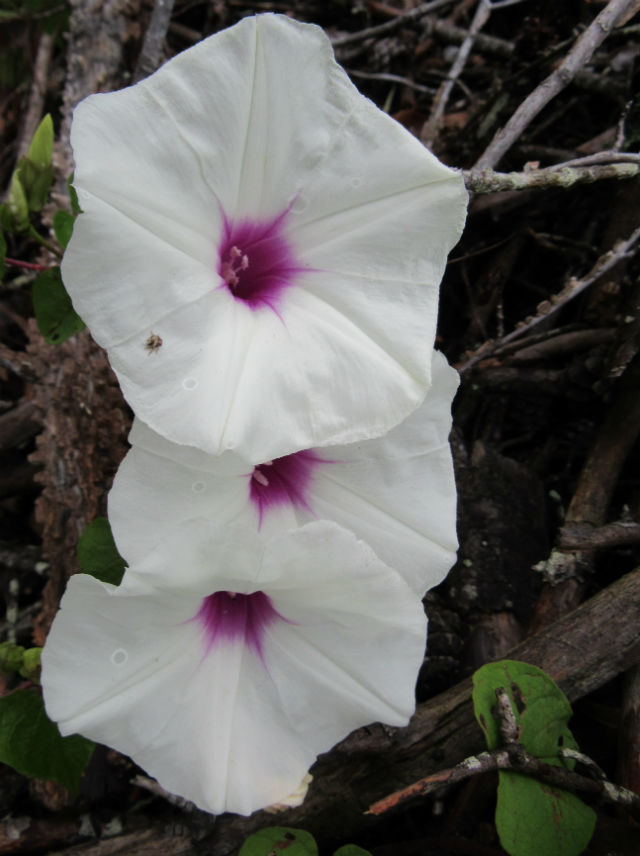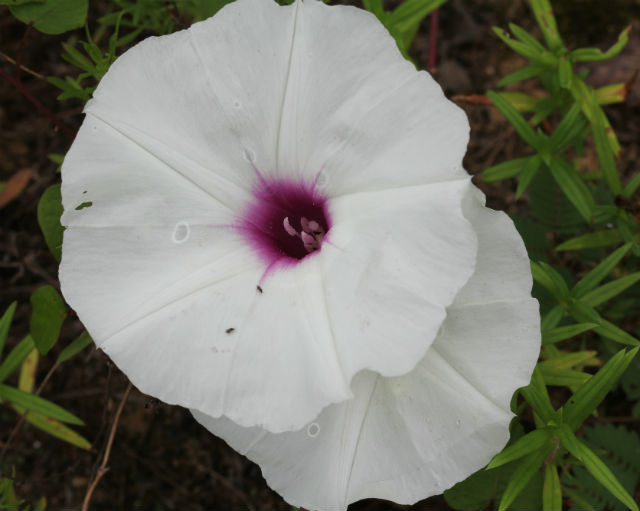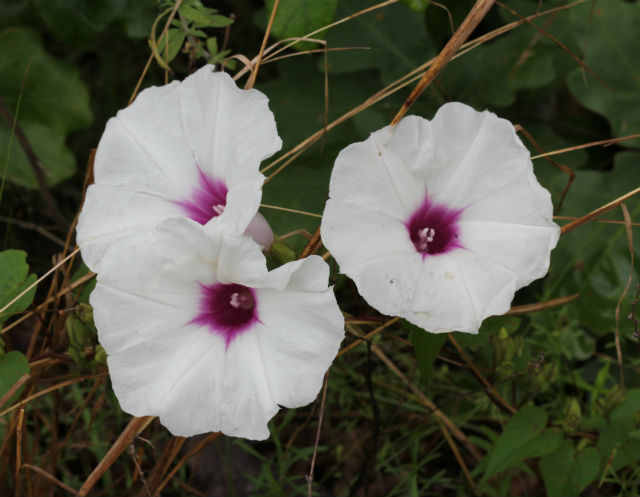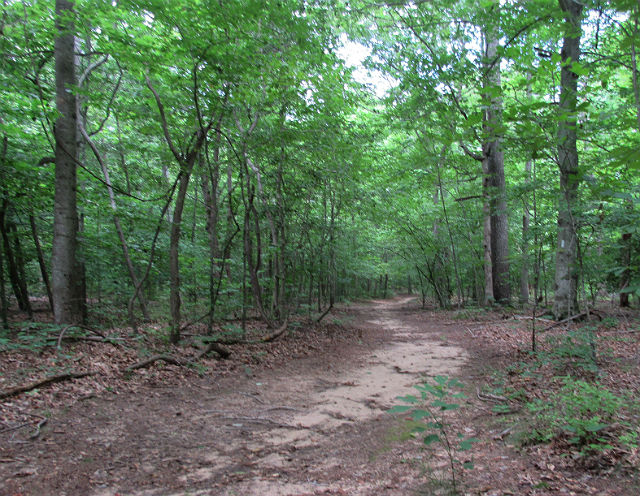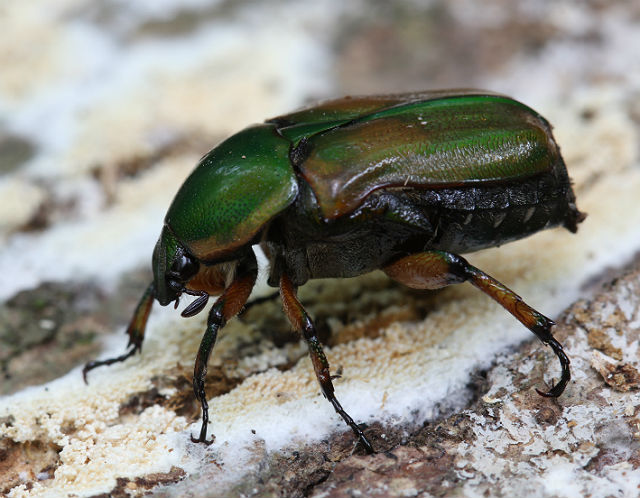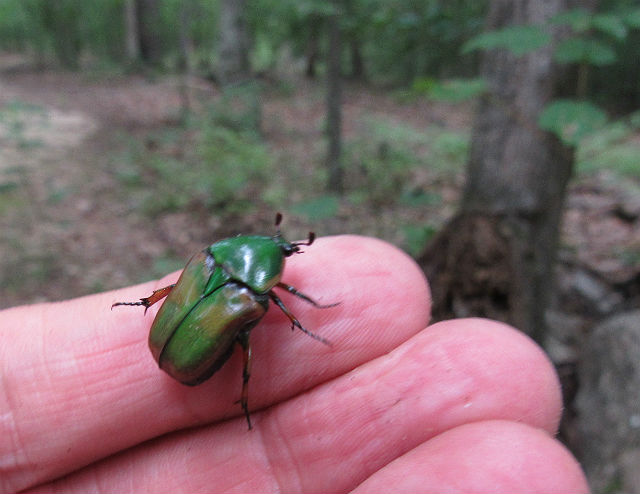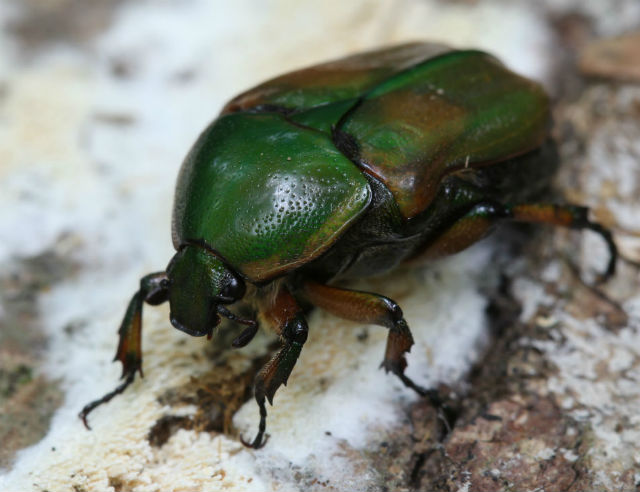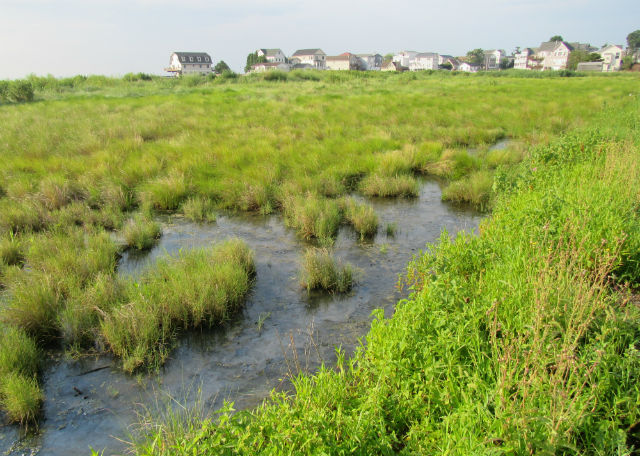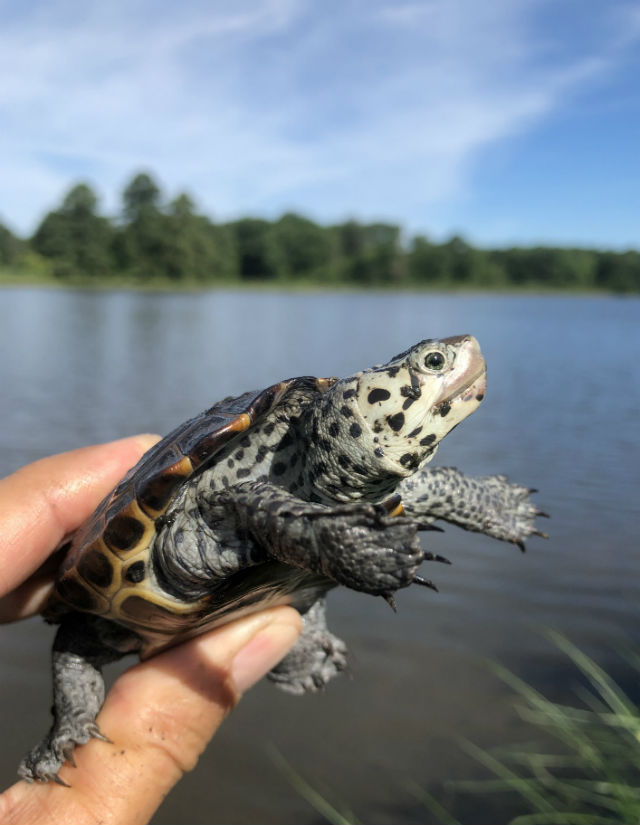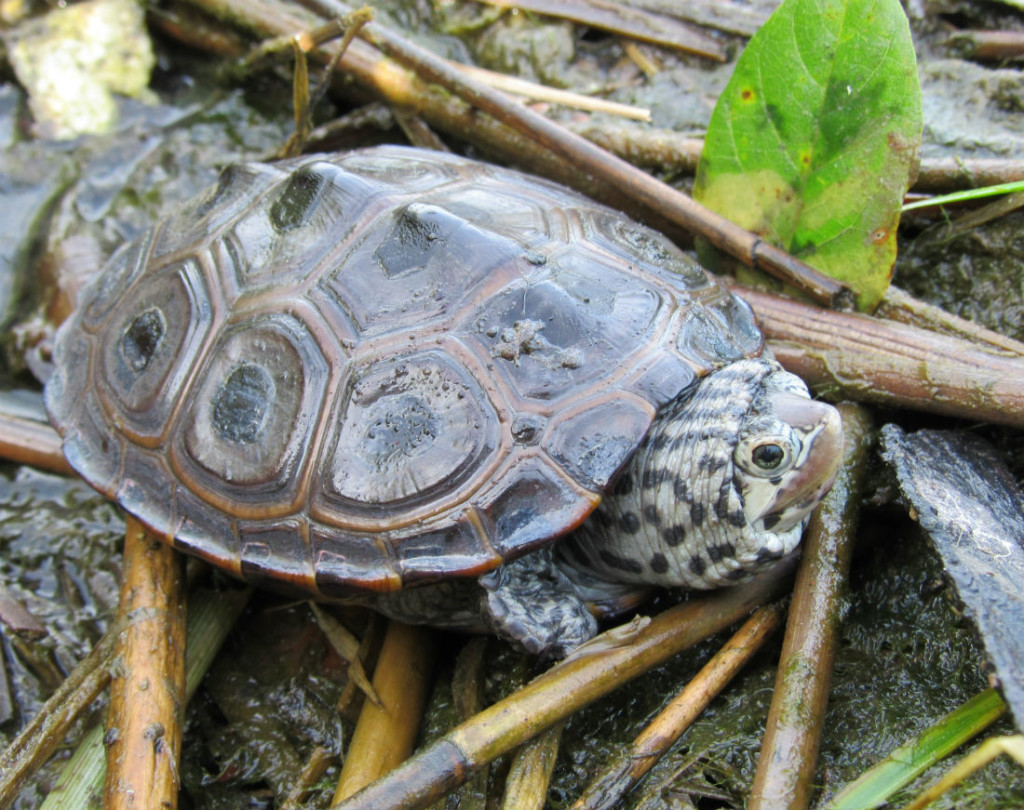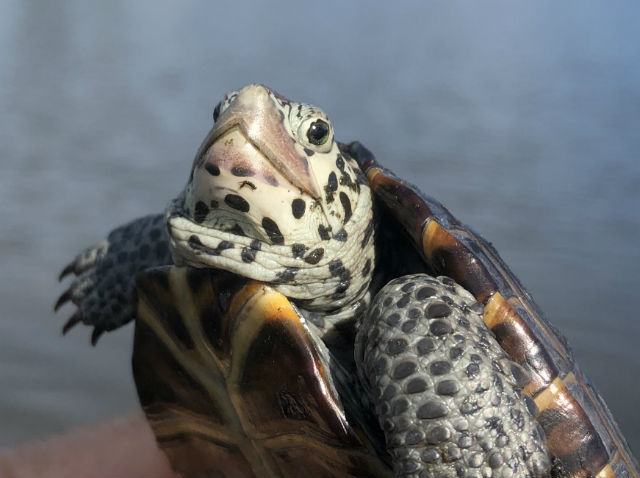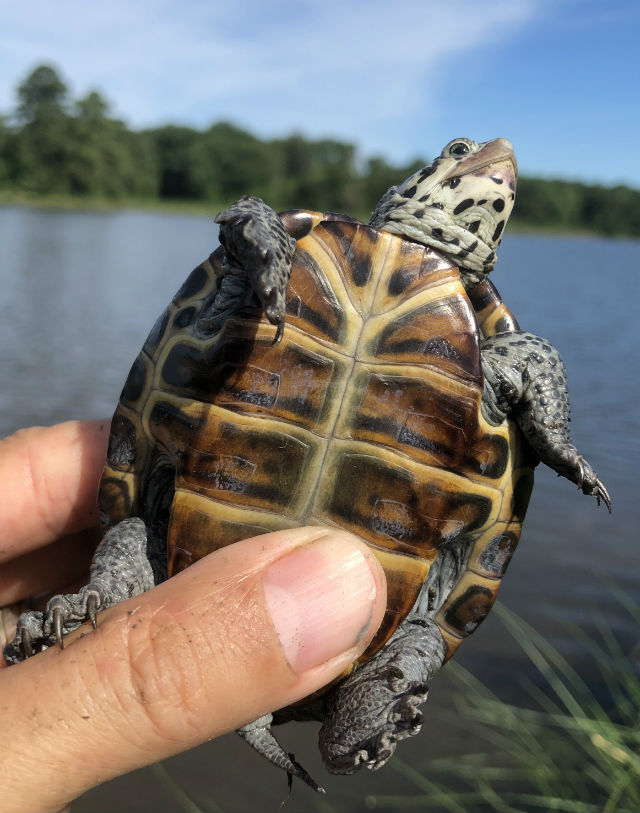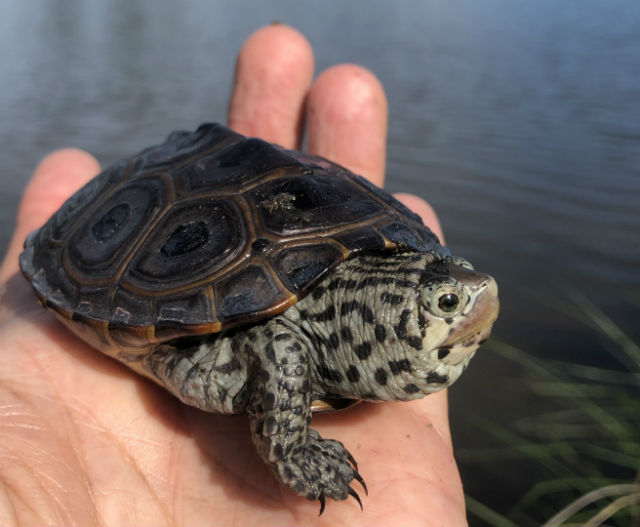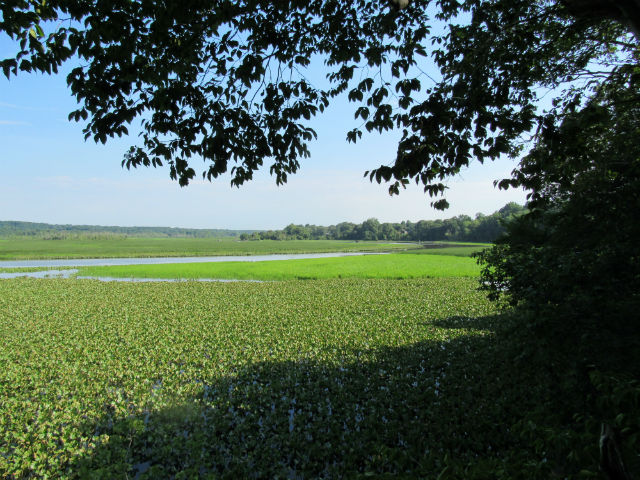
While staying in Chesapeake Bay, Maryland, I observed several of these fish-eating raptors. Sometimes known as a Fish Hawk, this very distinctive bird was once classified with other hawks, but is now placed in a separate family of its own.
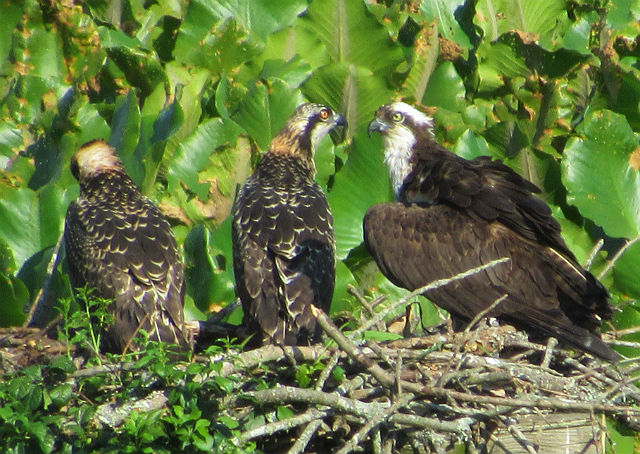
The Osprey’s head is distinctive, with a white crest and a face bisected by a dark eye-stripe. This bird has yellow eyes. Its feet (talons) are uniquely adapted for capturing and carrying fish; the surfaces are rough, and their toes can be held with three forward and one back, or with two forward and two back.
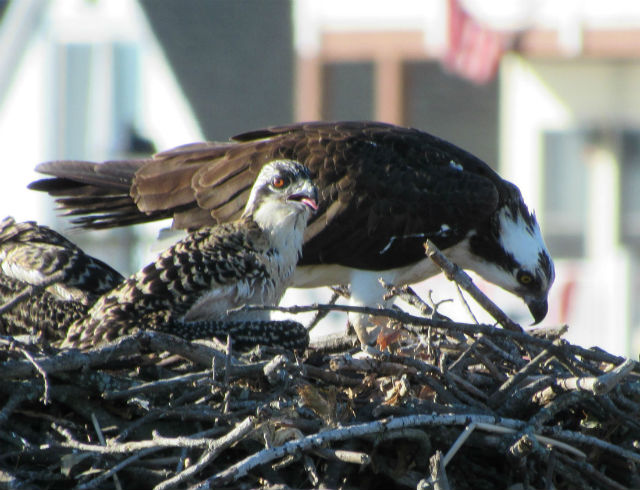
Its habitat is along coastlines, lakes and rivers. Its distribution is almost worldwide. The Osprey can often be seen flying over the water, hovering, and then plunging feet-first to catch fish in its talons. After a successful strike, it tends to fly away carrying the fish so that its head faces forward in a streamlined position for transporting it through the air.
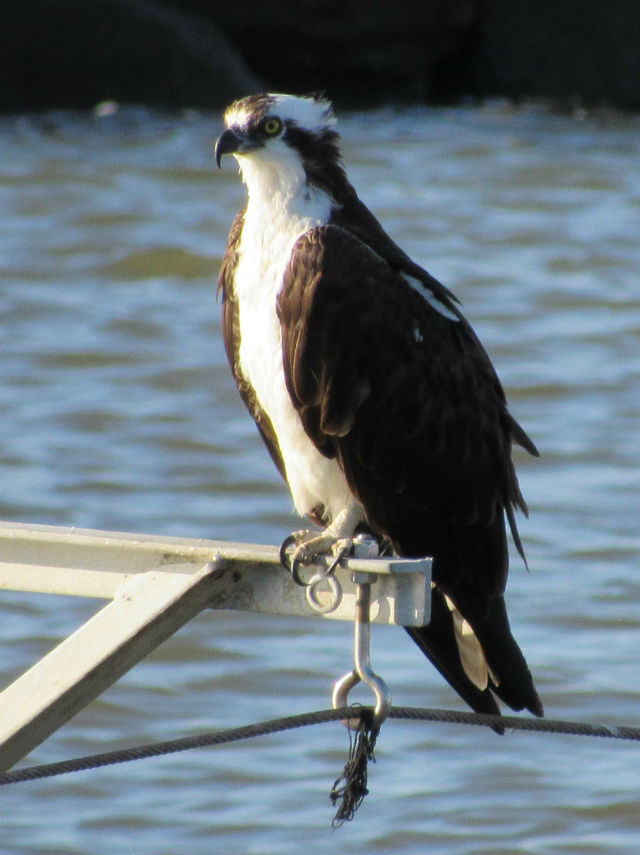
When diving in pursuit of fish, an Osprey can completely submerge itself under water and still be able to fly away with its catch. it has Osprey a third eyelid (called a nictitating membrane, which is semi-transparent) that acts like goggles and helps the bird see clearly beneath the water.
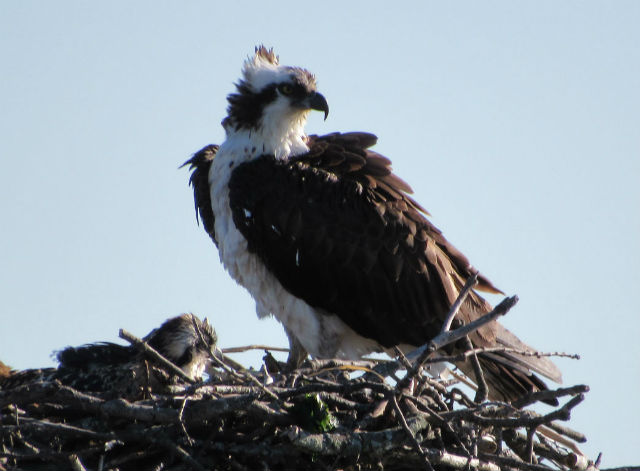
Most of their nests that I saw had babies, which usually number three. The female Osprey remains with her young most of time, sheltering them from sun and rain, while male hunts and brings back fish, which the female feeds to her offspring. This bird feeds almost entirely on fish that are less than a foot long.
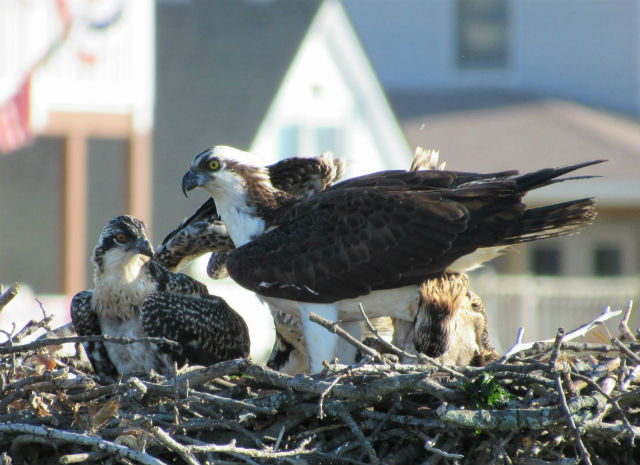
The Osprey was seriously endangered due to effects of pesticides in mid-20th century; since DDT and related pesticides were banned in 1972, Fish Hawks have made a significant comeback in many parts of North America.
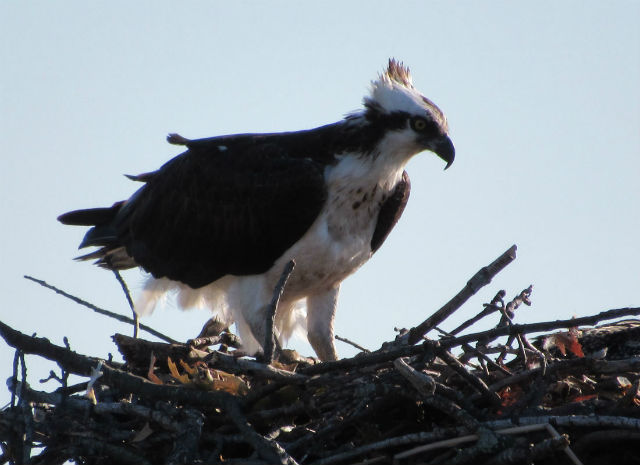
Although on previous trips to the coast I was able to see Ospreys from afar, this was the first opportunity for me to get a close-up look at them – and they were fascinating to watch.
Third Eye Herp
E-mail

